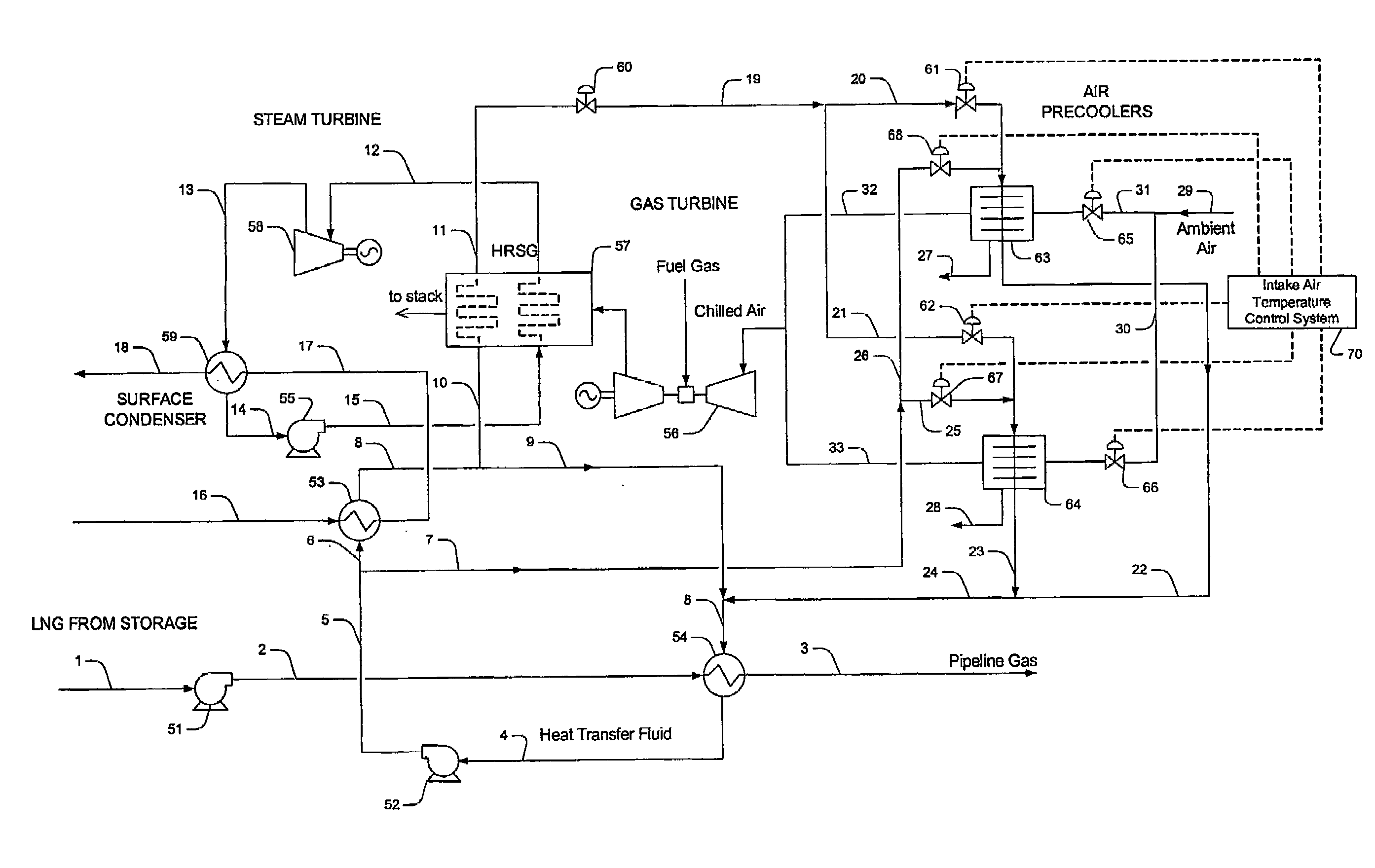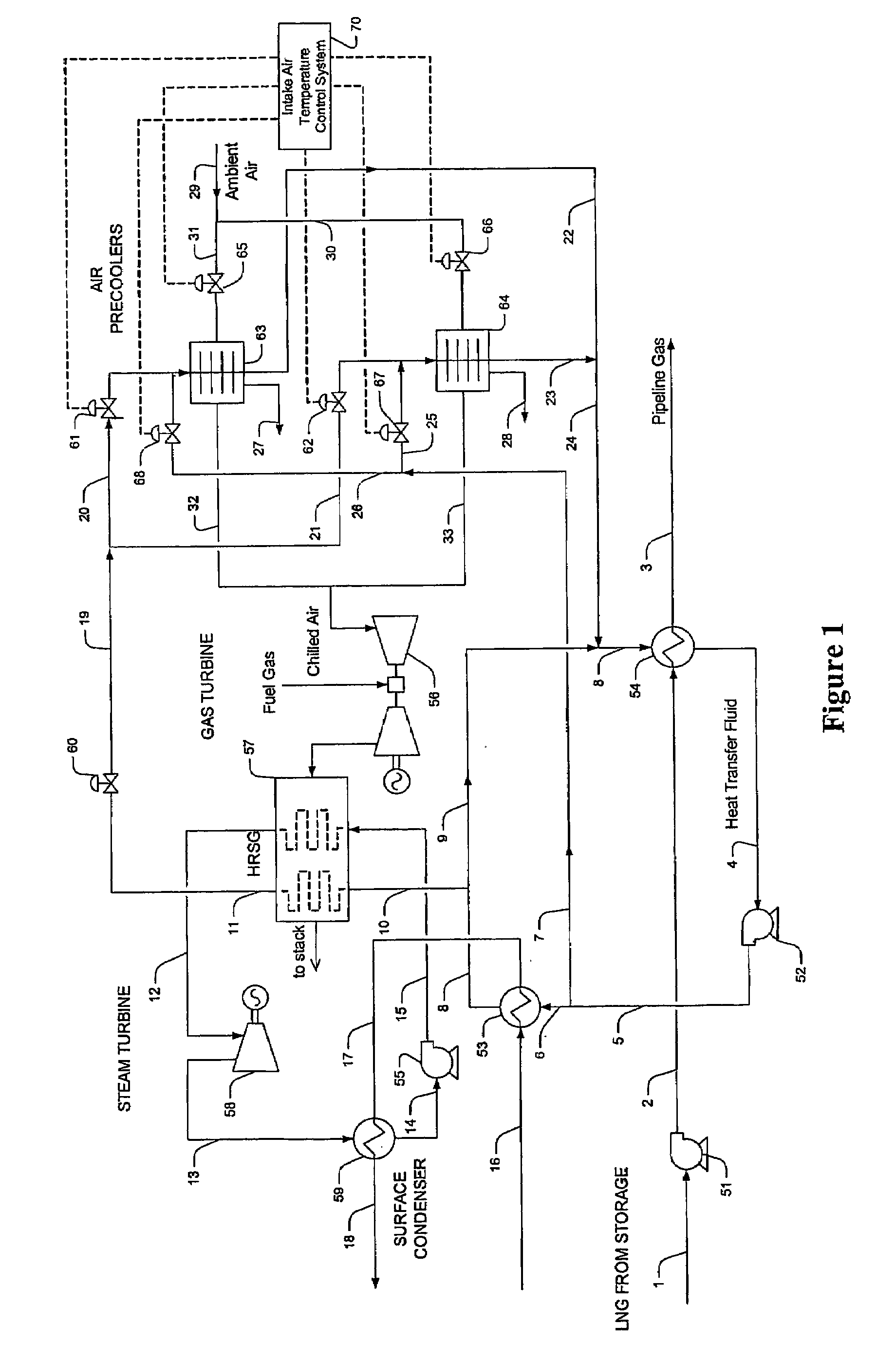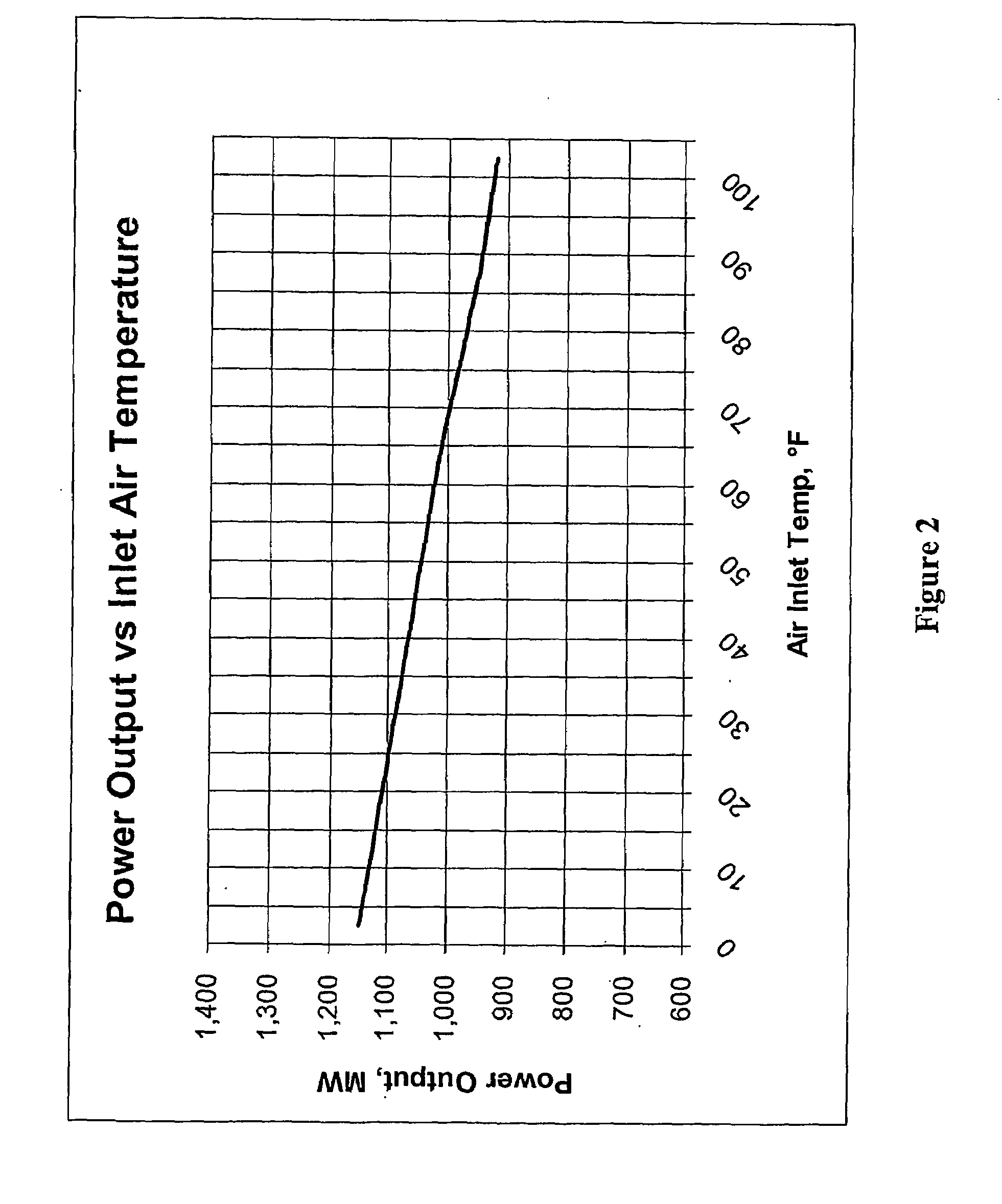Configurations And Methods For LNG Fueled Power Plants
a technology of lng and power plants, applied in the direction of machines/engines, mechanical equipment, containers, etc., can solve the problems of increasing global natural gas consumption, reducing the efficiency of vaporization, and increasing the cost of vaporization, so as to reduce the condensation of steam and improve the power output.
- Summary
- Abstract
- Description
- Claims
- Application Information
AI Technical Summary
Benefits of technology
Problems solved by technology
Method used
Image
Examples
Embodiment Construction
[0021]The inventor discovered that power output and efficiency in a combined cycle power plant can be substantially increased in a seasonally independent manner by integrating power generation with extraction of refrigeration content in LNG.
[0022]More specifically, LNG is regasified in a LNG regasification unit to thereby cool a heat transfer fluid. A first portion of the cooled heat transfer fluid is then used in a precooler to provide deep chilling of combustion turbine intake air to a temperature below 50° F., more typically below 32° F., and most typically below 0° F., while a second portion is used to cool the cooling water supplied to the working fluid (e.g., expanded steam) in a power cycle. The so warmed heat transfer fluid is further heated (e.g., in a HRSG) and then employed to deice frozen condensate formed in the precooler. Most typically, a second precooler is employed to maintain continuous operation of the combustion turbine and operated in an alternating manner with ...
PUM
 Login to View More
Login to View More Abstract
Description
Claims
Application Information
 Login to View More
Login to View More - R&D
- Intellectual Property
- Life Sciences
- Materials
- Tech Scout
- Unparalleled Data Quality
- Higher Quality Content
- 60% Fewer Hallucinations
Browse by: Latest US Patents, China's latest patents, Technical Efficacy Thesaurus, Application Domain, Technology Topic, Popular Technical Reports.
© 2025 PatSnap. All rights reserved.Legal|Privacy policy|Modern Slavery Act Transparency Statement|Sitemap|About US| Contact US: help@patsnap.com



